C-Betting In Position – PLO Strategies to Maximize Your Results
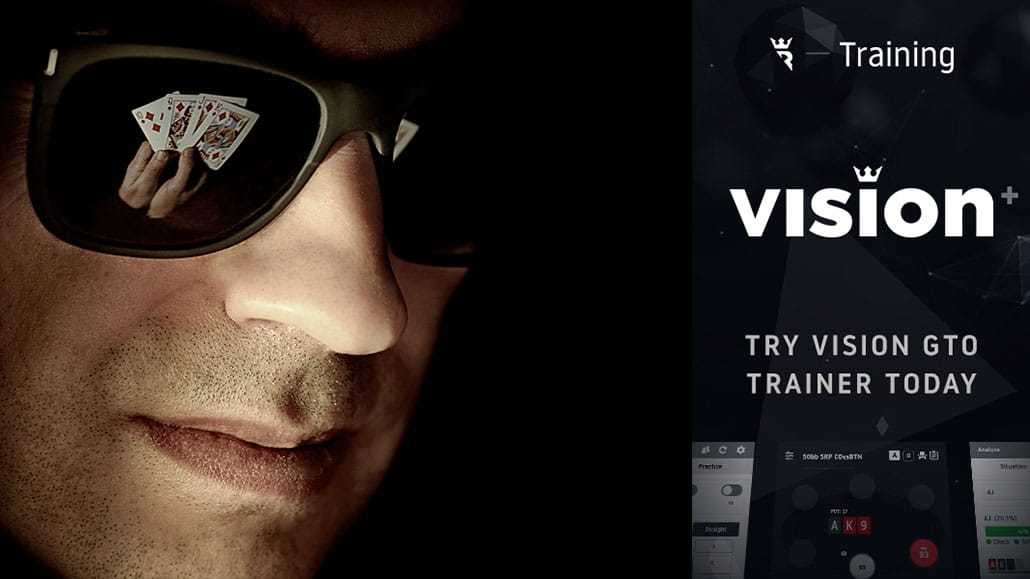
6 minutes
Last Updated: March 17, 2024
Learn the math behind Pot Limit Omaha and boost your performance with the most advanced GTO solver for the PLO games. Try this tool today!
…
One of the best ways to improve your Pot Limit Omaha results almost immediately is by improving your strategy for c-betting when you are in a position. Much like in Hold’em, continuation betting plays a big role in PLO.
However, figuring out your c-betting ranges in this game is a bit more challenging.
Your opponents will frequently flop enough equity to continue in a hand, so you won’t see nearly as many flop folds in this game. Therefore, when deciding whether to c-bet or not in a PLO hand, there are more things you need to consider.
This isn’t to say that you shouldn’t continuation bet in PLO, of course. However, you should approach the idea behind this strategy from a slightly different angle. In this article, I’ll try to give you some basic tips and a few hand examples to start developing the right approach.
Basics of PLO C-betting in Position
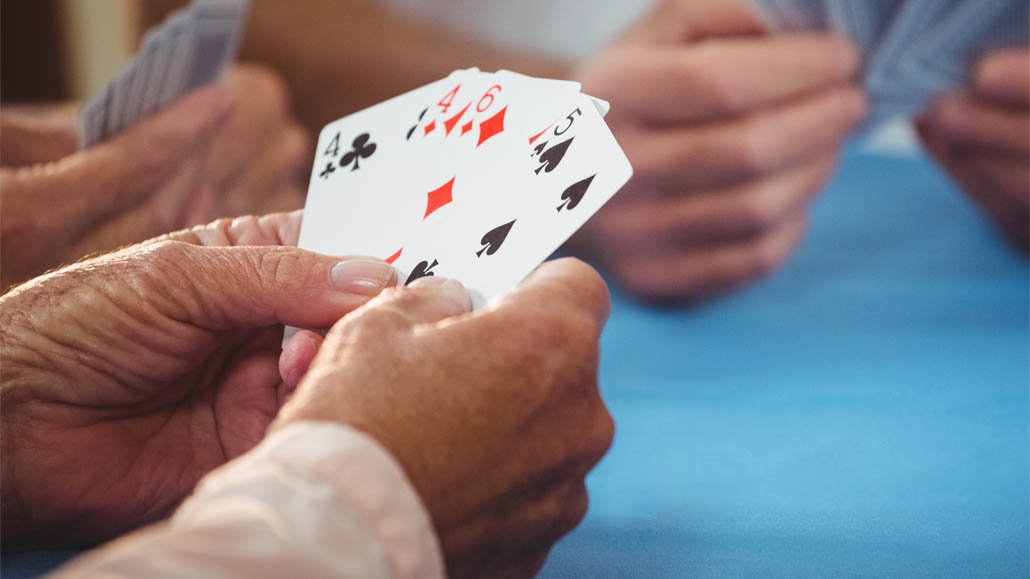
In most poker variations, a c-bet tries to accomplish one of two things:
- You don’t have a strong hand and want your opponent to fold, or
- You have a strong hand and want to build a pot.
Of course, things aren't always as clear-cut, as often your hand will be somewhere in-between. You might not have a big hand, but you still don't mind seeing a call. It's all very situational, but at the very basic level, a continuation bet aims to achieve one of these two goals.
In Hold’em, this is a very powerful weapon, because more often than not, players fail to connect with the flop.
So, having the initiative in the hand as well as position, you’ll often take down the pot with a simple c-bet.
In Pot Limit Omaha, the position is much more powerful than in Texas Hold’em, but the continuation bet isn’t nearly as strong.
First of all, your opponent will have enough equity to continue in a hand much more frequently.
Blindly barreling away at every flop simply isn’t going to work.
Secondly, many hands will go multi-way, and in that scenario, your continuation bets will become almost useless when used as a bluff. You’re much better off seeing another card in position and trying to improve.
When you bet, you’ll open the action, making it possible for someone to check-raise you and shut you out completely. Even if they just call, you’ll have to give up on many turns.
With these basic PLO c-betting tips out of the way, it’s time to move on to some more concrete examples.
Choosing Which Hands to C-bet in PLO
There are many factors to consider when choosing what hands to c-bet in position and what hands to check back. In general, you’ll want your continuation bet percentage to be lower than in Texas Hold’em for all the reasons mentioned above.

The type of hands you'll want to check back are the hands from the middle of your range. These holdings will benefit more from a free card and usually can't stand a check-raise. You should especially observe this on wet boards where you're much less likely to get a fold.
So, you should save your IP c-bets in PLO for two situations:
- Hands with no real equity (air)
- Very strong hands (for value and protection)
The first scenario should be quite self-explanatory. If you have a poker hand that has no equity and isn’t likely to improve on the turn, c-betting makes sense.
You’re not going to win at a showdown, so you bet the flop to try and win the pot. Even if you get check-raised, you’re not losing any equity.
In the second scenario, you're betting to build the pot but also to protect your hand.
It's very rare in PLO that you have a hand that can't be cracked on later streets.
So, by c-betting, you're charging your opponents to draw and maintaining some control in the hand.
The reason why you won’t see that many folds on the flop is that players often have the right odds to draw in PLO. So, your continuation betting strategy needs to be devised with that in mind.
IP C-betting Example 1
For this part, I’ll be using Vision GTO Trainer, a very nifty product by guys over at Run It Once, which makes it very easy to learn PLO in a practical way. You can set up all sorts of scenarios, and the app will give you answers as to the best course of action.
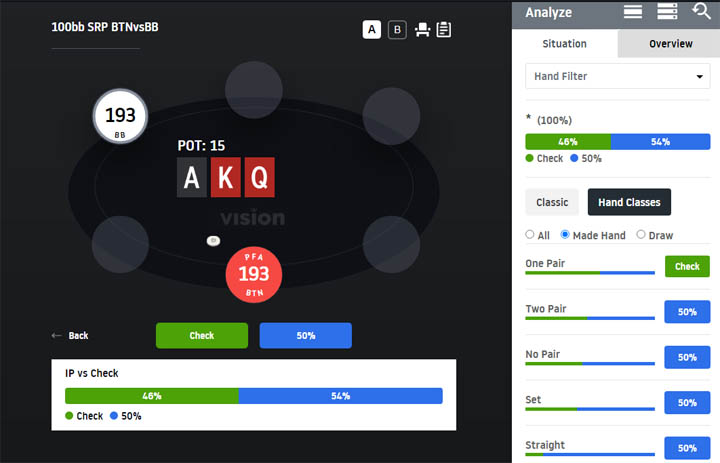
This is a fairly standard hand. You open from a button and get called by the big blind. The flop comes with all high cards and some straight and flush possibilities.
As you can see, Vision suggests continuation betting in this spot around 54% of the time with your entire range. You’d expect this number to be higher on this specific texture. But for the reasons we’ve explained earlier, it’s not.
For example, all your top pair hands will be a pure check.
If all you have is a top pair on this texture, there is absolutely no reason to continue betting.
A hand like AQxx, containing top and bottom pair, will c-bet much more frequently than 54%, especially if combined with some backdoor possibilities. This is a relatively strong hand, but it’s susceptible to many bad turn cards, so you need to protect it.
With a hand like a top pair and a flush draw, you’ll want to check back well over 90% of the time.
This is not the kind of hand that does well against a check-raise, and you have a lot of equity. An exception is if you have the nut flush draw because that’s the hand that doesn’t mind a check-raise that much, so you’ll be c-betting almost 70% of the time.
IP C-betting Example 2
It’s quite common to see paired flops peel off in PLO so it is worth spending some time to understand how to counter these situations. How do you deal with these when you’re IP and deciding whether to c-bet or not?
Looking at the same BB vs. BTN scenario, Vision suggests that your decision will depend primarily on the type of pair that’s on the flop.
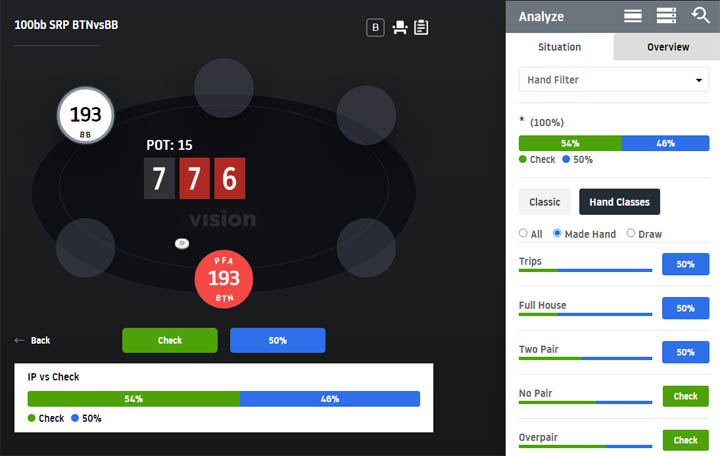
Overall, though, your c-betting frequency on these types of textures should be a bit less than 50% for the most part. if you spend some time with the right poker software, you can very quickly get a hold of what you should be doing in different situations.
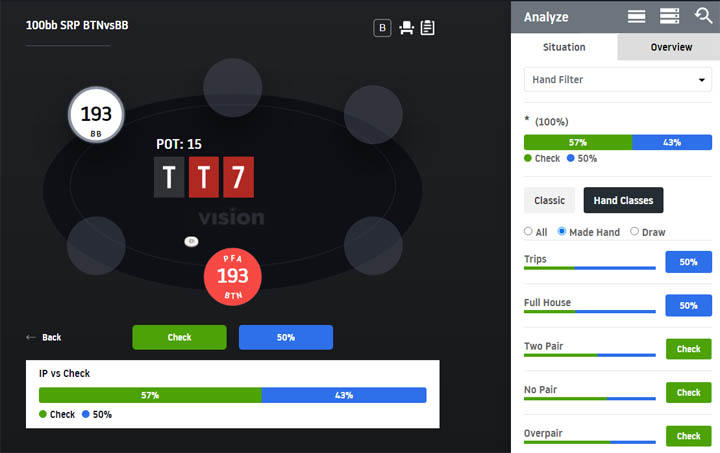
It’s interesting to note that you should be betting more frequently with strong hands. With naked trips and full houses, you should be c-betting around 62% of the time. Hands like over-pairs and two pairs should be in your check-back range more often.
PLO IP C-betting Summary
Understanding an effective c-betting strategy is one of the key skills you’ll need to master in PLO if you are to expect any success. The strategy includes some more finesse than No-Limit Hold’em, so don’t expect to get there overnight.
It’ll take some time and effort, but it will be well worth it as your results will start to improve almost immediately.
So if you are ready to study this area, make sure to check the Vision GTO trainer and play around with this it yourself. Try this tool today!


















